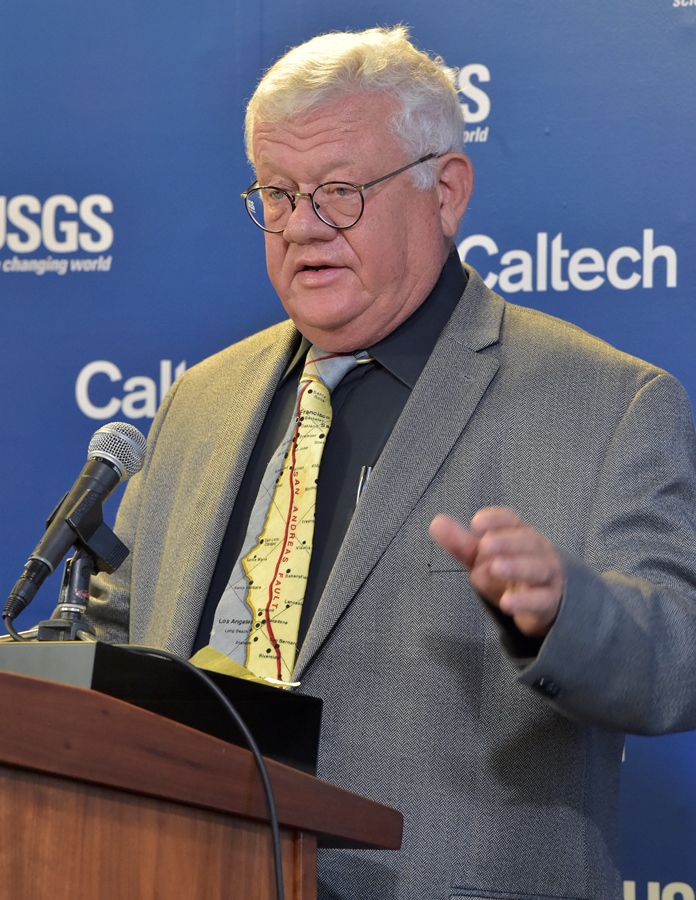 View Winners →
View Winners → Long-Awaited ShakeAlertLA Earthquake Early Warning App Now Available


Sporting a San Andreas Fault tie, one of the early pioneers Cal Tech Professor Tom Heaton has spent decades developing the system along with colleagues of USGS. – Photo by Terry Miller / Beacon Media News
By Terry Miller
The ShakeAlert system developed by the U.S. Geological Survey has released ShakeAlertLA, a mobile app that sends alerts to users within Los Angeles County that an earthquake of greater than magnitude 5.0 or level IV intensity has been detected and that they may soon feel shaking. The app is available for both Apple and Android devices and available in both English and Spanish. You can also use this app to prepare for an earthquake, get details on recent earthquakes, and find help after an earthquake.
ShakeAlertLA is the result of a partnership between the City of Los Angeles and the U.S. Geological Survey’s ShakeAlert system in partnership with Pasadena’s CalTech.
That system has 400 sensors in California, Oregon, and Washington, which will supply the seismic data. The city spent about $300,000 for AT&T and the GRYD Foundation to build an app that can turn the data into mobile alerts
This app is an official pilot in partnership with the U.S. Geological Survey.
Years in the planning stages, Caltech officials were delighted to announce last October the beginning of the new technology. ShakeAlert, an innovative technology designed to alert people about a significant earthquake before shaking arrives, was developed by the U.S. Geological Survey, UC Berkeley, California Institute of Technology, University of Washington and University of Oregon in partnership with the California Governor’s Office of Emergency Services. Even with just a few seconds of warning, trains can be slowed or stopped, a surgery can be paused, and a person can brace themselves or quickly take shelter.
Since 2014, Representative Adam Schiff and his colleagues in Congress have been working to provide the sustained funding needed to build out ShakeAlert and get it up and running. They have secured over $45 million dollars for the system so far, with more expected this year. For the past few years, researchers and emergency service authorities have been beta testing the system, ensuring its accuracy and reliability.
There are now more than half the number of sensors installed that are needed for a fully-operational system along the West Coast. Businesses, schools and local governments can now work with ShakeAlert partners to distribute the alerts for members of their organizations. Fifty pilot projects are now up and running for public transportation systems, schools, hospitals, utilities, and more.
